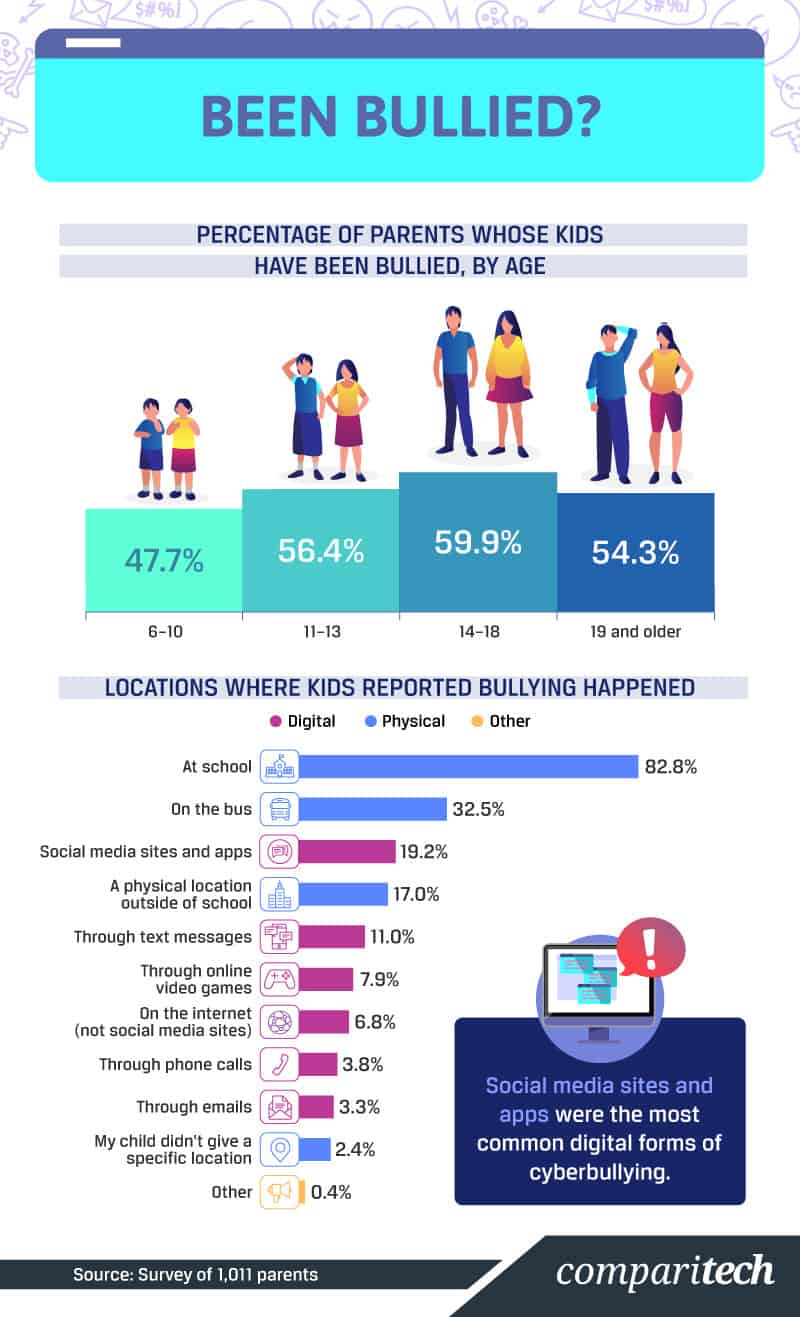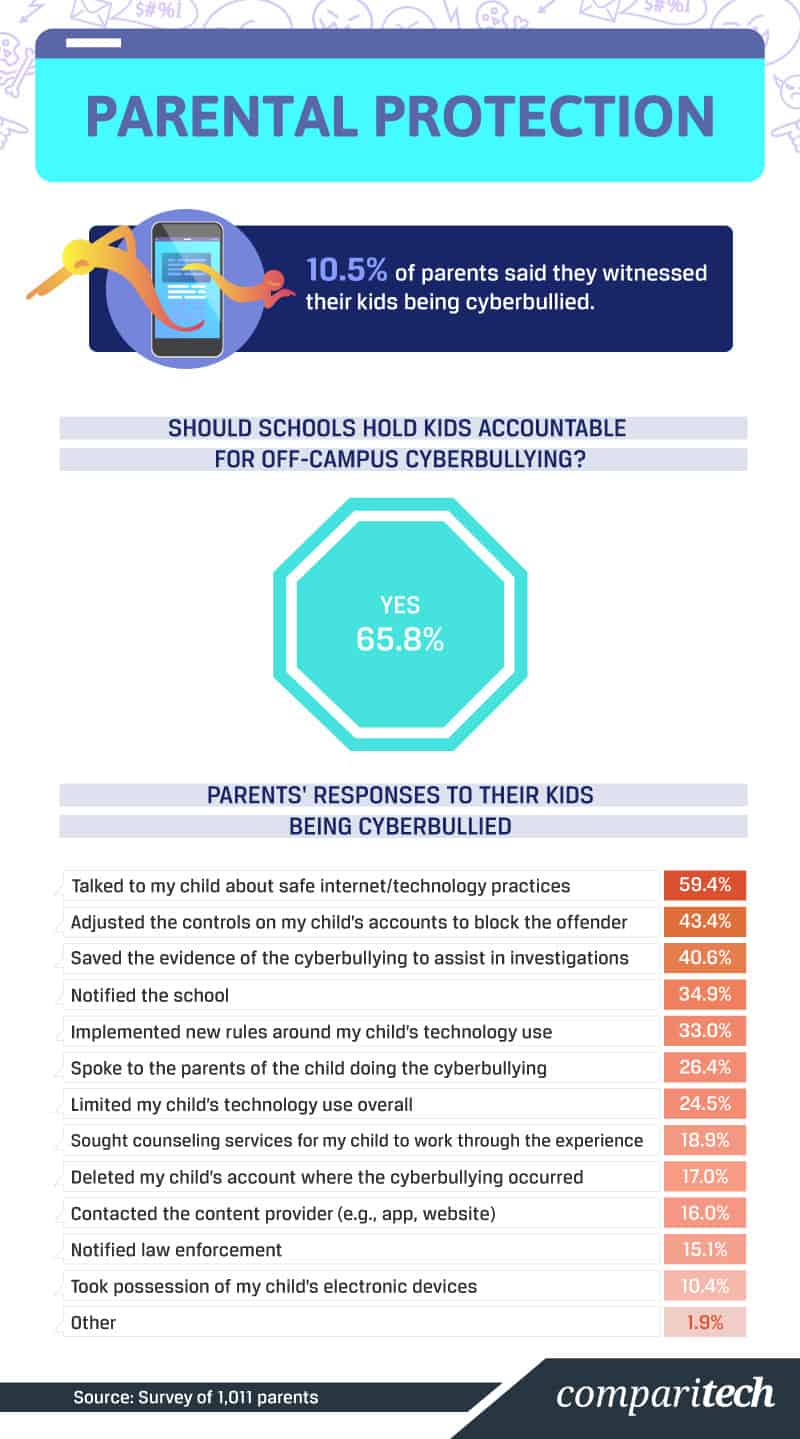Complete report
Bullying used to be depicted as kids being shoved into lockers and coerced out of their lunch money by the older, more popular rulers of the school. Nowadays, the focus on bullying has shifted to those hiding behind computer screens and taunting others in the virtual world. While in-school bullying is on the rise, technology and social media have created alternate avenues for bullies to wreak havoc. Whether bullying is done on school grounds or over the phone, the consequences can be lifelong and even life-ending.
So how many kids are experiencing cyberbullying and how do their parents feel about it? To get a better idea of technology’s role in bullying, we surveyed more than 1,000 parents of children over the age of five and asked about their children’s cyberbullying experiences. Continue reading to see what we learned.
History of Harassment

High school students were bullied the most of any age group, according to their parents. Almost 60 percent of parents with children aged 14 to 18 reported them being bullied, but middle school-age children weren’t far behind. Fifty-six percent of parents with children aged 11 to 13 also reported their kids experienced bullying.
Nearly 83 percent of parents said the bullying happened at school, and 32 percent said it happened on the bus. While the majority of bullying occurred in physical locations, bullying on digital platforms occurred in a wider variety of outlets. Nineteen percent of bullying was through social media, and 11 percent was through text messages.
Online video games, internet sites other than social media, phone calls, and emails were also susceptible to bullying. The scary part of the digital world is that a person doesn’t even need to have an account on social media to be a victim of cyberbullying. The spread of private information and harmful words on social media sites can be saved and spread in the “real world,” eventually making it back to the victims.
How Do Parents Help?

Cyberbullying can make it difficult for parents to intervene or protect their children from becoming digital victims.
Around 59 percent of parents who reported their children being cyberbullied decided to talk to them about how to safely navigate the digital world. Forty-three percent of parents also adjusted the controls on their children’s accounts and blocked the offender. As many social media platforms have received backlash for their failure to act on cyberbullying, it seems it is up to the parents to block or censor their kids’ feeds to minimize bullies’ ability to reach them.
Unfortunately, the issue of failure to intervene is also directed at schools. While schools have some authority over what occurs on school grounds, cyberbullying can take place anywhere and usually occurs off campus. Multiple states have laws allowing schools to punish students involved in cyberbullying, but free speech issues can make it difficult to hold students accountable for off-campus acts. The pushback doesn’t sit well with the majority of parents, though.
Almost 66 percent of parents thought schools should hold kids accountable for off-campus cyberbullying – and their desires are supported by research. Studies have shown that cyberbullying is usually not completely off campus, with social media and internet harassment often being an indicator of in-school bullying. Even if the school doesn’t do anything to intervene, 35 percent of parents said they notified the school about a cyberbullying incident.
No comments:
Post a Comment